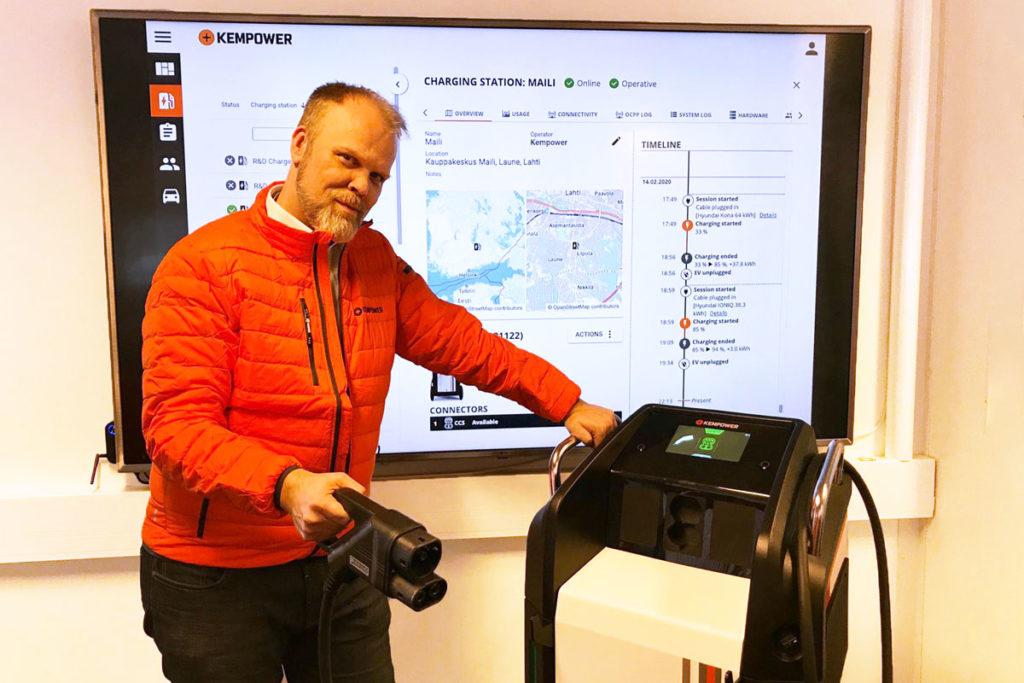Every new electric car is a risk for e-mobility service providers: Plug fits but the charger does not charge
Although we have charging standards such as CCS2 or CHAdeMO many car manufacturers and vehicle models have their own variations of the communication protocols set in the standard. If a charger cannot interpret the vehicle’s communication, charging does not occur.
This is a difficult situation for service providers offering EV charging services — charging stations are expensive investments so they cannot stop working when a new car model comes along or if the car software is updated. This is extremely annoying for the EV drivers as well, as if your battery is running flat and you pull up to a charging station that cannot charge your car even though the plug fits, there is nothing you can do.
Charging an electric car is not just transferring electricity from the grid to the car’s batteries. Charging an electric vehicle is communication between the charger and the car.
Juhana Enqvist, Director, Product Management Kempower
Kempower’s cloud-connected chargers update to support new car makes and models
Unlike many fast charger manufacturers, Kempower’s own engineers create, test, and update the charger software and how it handles the protocols.
When new electric car models hit the market, our engineers test the communication between the charger and the car, interpret the car-specific variations and update our charger software accordingly. Since our chargers are cloud-connected, we can update Kempower chargers globally within a few days from the launch of a new car make or model.
Juhana Enqvist
This is a huge advantage for charging service providers and a relief for EV drivers. When investing in Kempower charging infrastructure, service providers can rely on an investment that works now and will do so in the future with all electric vehicle makes and models. EV drivers can trust that charging will work when they plug their car into a Kempower charger.

Cloud only works when it is communicating – what about communication breakdowns?
Cloud services and chargers connected to them experience communication and electricity outages as well as other failures. Here is where Kemppi’s legacy steps in. Kemppi welding machines have been connected to cloud services for years. It’s common that welding machines are used in remote locations with poor communication networks, or they are offline.
We have developed a cloud service infrastructure that is extremely resistant to all kinds of failures, and communication or electricity outages. The architecture and buffering are designed with these in mind and we have used it successfully for years. Kempower chargers and cloud services can independently recover from any failures and breaks. It really does work and data moves.
Juhana Enqvist
Having your own cloud service in the fast charger market is not very common, especially not a cloud service architecture capable of handling all kinds of failures and outages.
Reliability is not just recovering from failures: it’s securing your privacy
Who, when, and where is charging happening? Which vehicle is being charged? What’s the serial number? Who’s paying? Which payment method is used? A lot of privacy information is related to charging an electric vehicle. This sensitive information when combined with other data, opens a lot of opportunities — and yes, privacy threats. Therefore, privacy and data security are crucial features for an EV charger and cloud services connected to it.
We of course use serverless computing with the best security mechanisms on the market to ensure that our cloud service is safe and unbreakable. We chose Amazon as a partner since their serverless computing services are the most advanced on the market.
However, it’s not just the technology — we have designed the entire cloud in a way that it does not store personal information. Some e-mobility service providers transmit a customer ID, but it is not linked to any personal information either. We can use an unidentifiable one-time charging ID to prevent any personal information be transmitted.
Juhana Enqvist
Fleet management, reporting and integration
Public transport operators and companies with large fleets have powerful fleet management systems, where they track vehicles, drivers, fuel — or in our case electricity — consumption, vehicle maintenance records and much more. Kempower cloud supports integration with these systems and information flows in both directions.
Juhana Enqvist, Director, Product Management Kempower
Enqvist and his team want to build a charging infrastructure they enjoy using
When reading feedback from EV drivers about fast charging stations, the complaints are plentiful. User interfaces are difficult to use, payment is complicated, charging speeds vary and rates are unclear.
One part of the problem is that many manufacturers outsource their software and cloud services, which leads to long development cycles and poor user experience. We at Kempower handle our software, hardware and cloud services ourselves, which is a clear advantage in creating easy-to-use chargers with a pleasant user experience.
With years of EV driving and charging experience and hundreds of thousands kilometers behind us, my team and I want to make easy and reliable chargers that we and everybody else enjoy using.
Juhana Enqvist
Charging infrastructure is under construction in many countries. Kempower range covers chargers from a 40kW movable T-Series up to megawatt-scale charging infrastructure systems.
Kempower has mastered the art of electric power. The power modules used in our chargers are decades-proven technology and are the best on the market. However, I believe that cloud services are the fastest-growing technology and we are just at the beginning.
Juhana Enqvist
Cloud services open a new set of possibilities. Charging stations could create a channel for communication, marketing, and additional services.
For instance, I see an app that informs you when the chargers are available when you drive by or if the charger is being used by another customer. Or that you can connect with the car service and support during charging. Retail stores with cloud-connected chargers at the parking lot can offer additional services for customers.
Juhana Enqvist






